Abstract
1. A simple oral loading technique involving the ingestion of solutions containing lactulose is described. Timed urinary excretion of lactulose, which is non-metabolizable, is used as an indicator of intestinal permeability, and measured by quantitative paper chromatography. 2. This technique has been used to investigate the intestinal permeability of apparently healthy adults following the ingestion of solutions made hypertonic by the addition of the solutes sucrose, glucose, mannitol, glycerol, urea and sodium chloride. 3. These experiments show that intestinal permeability to lactulose increases as the solute concentration in the ingested solution is increased. Susceptibility to this effect, though consistent for each individual, shows considerable variation between subjects. 4. Factors thought to be pernitent to the enhancement of intestinal permeability by hypertonic solutions, and some possible implications of this, are discussed.
Full text
PDF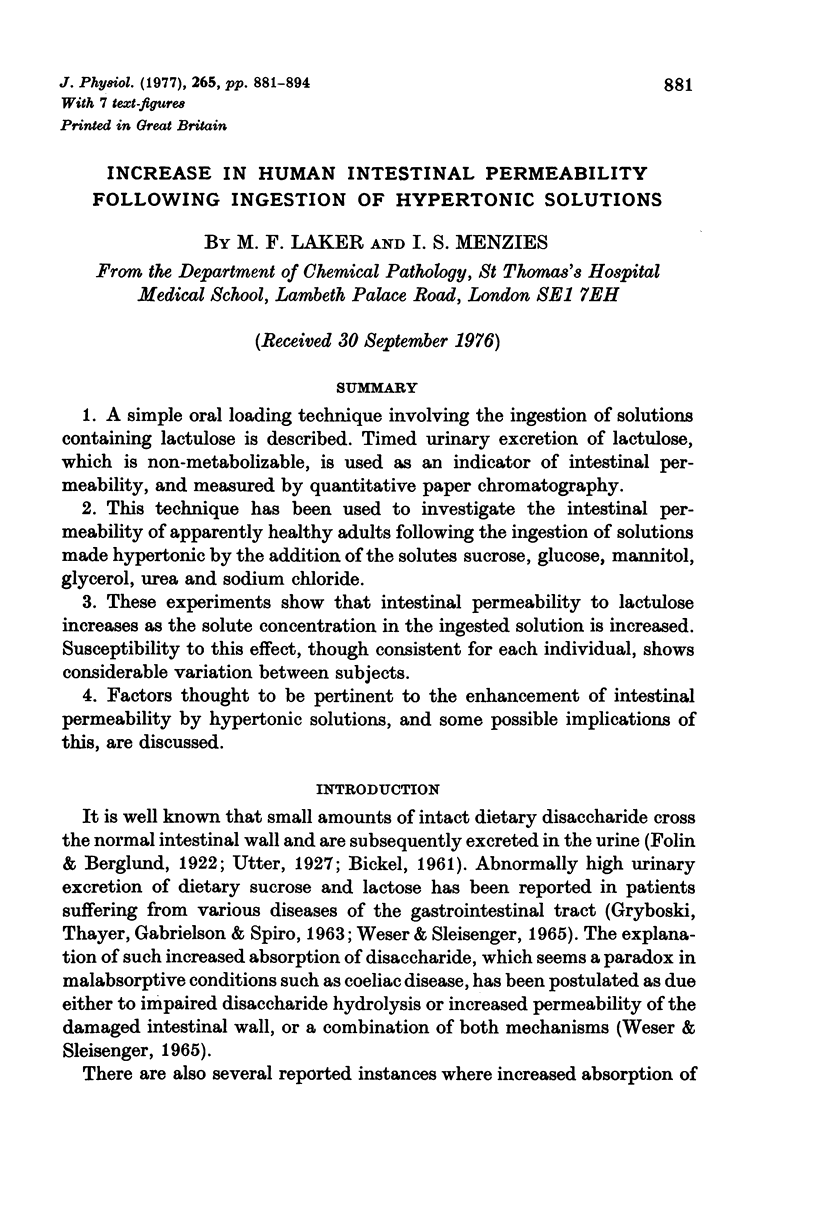
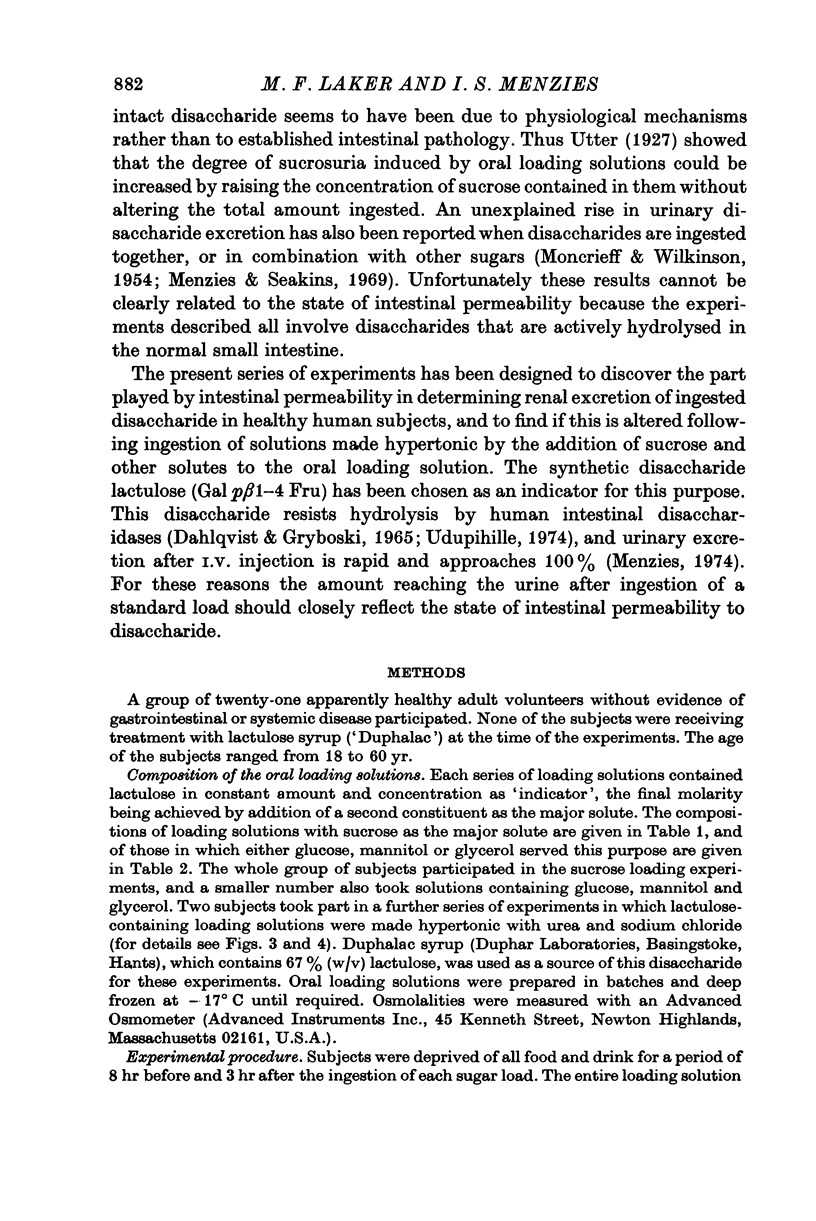
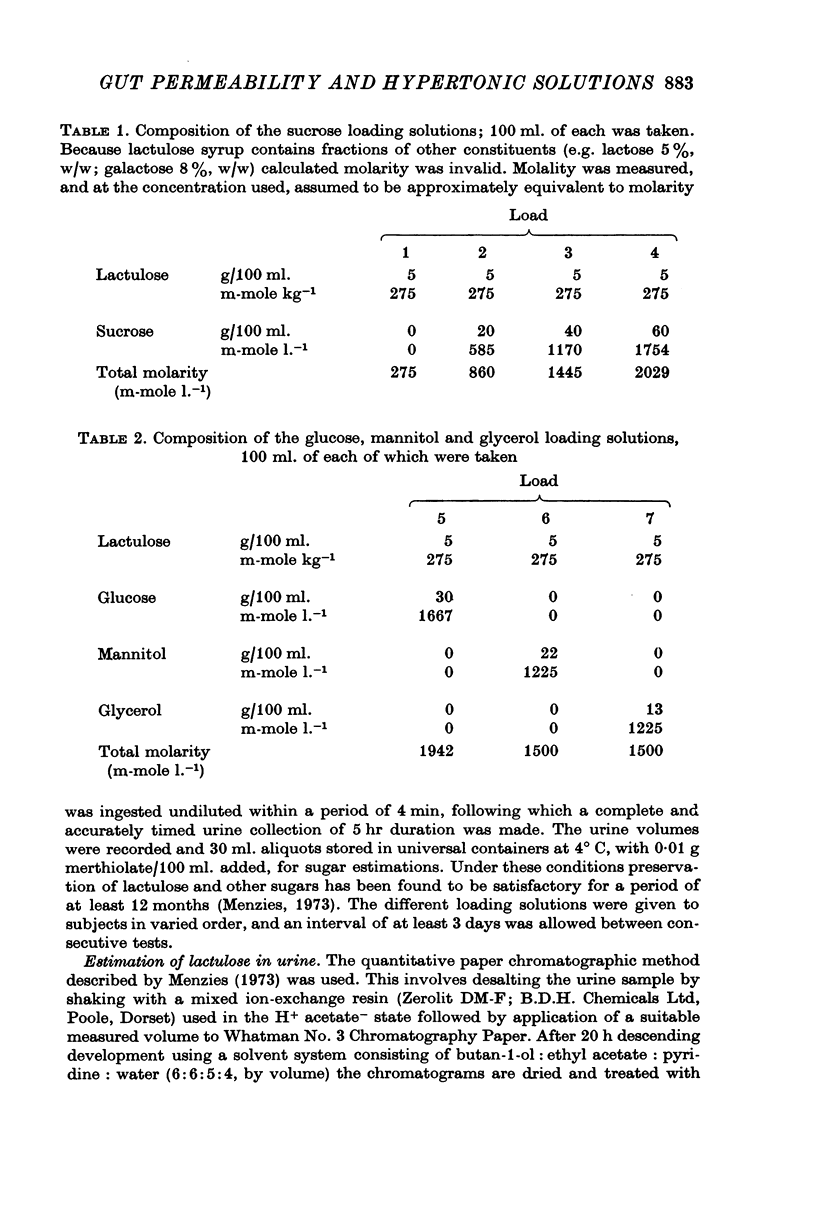
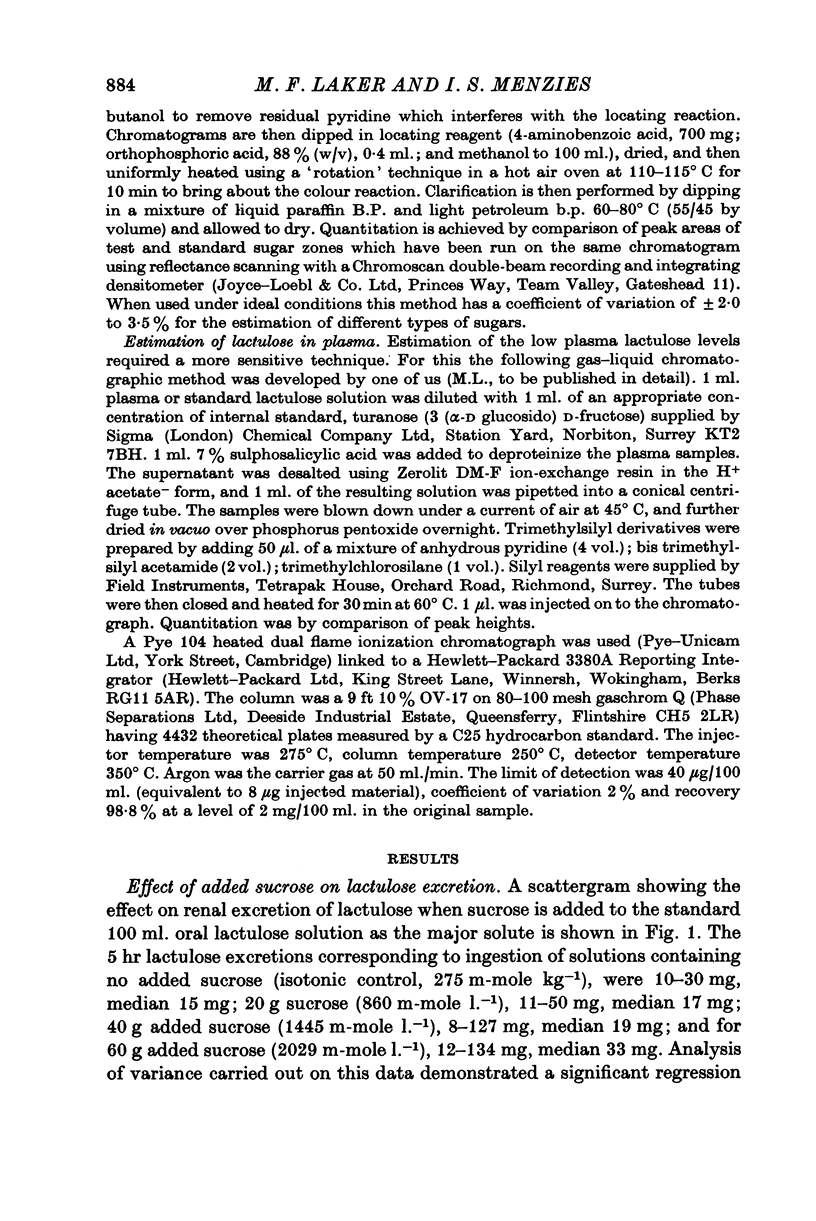
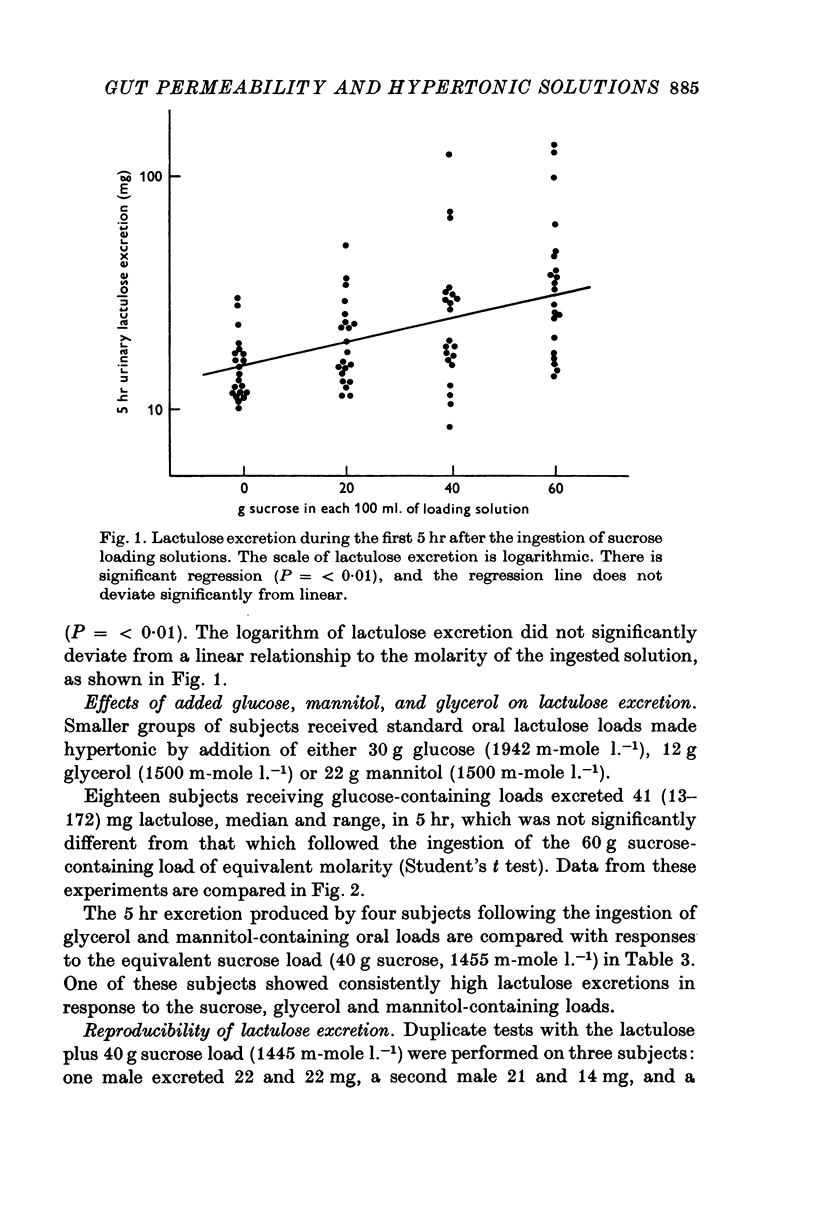
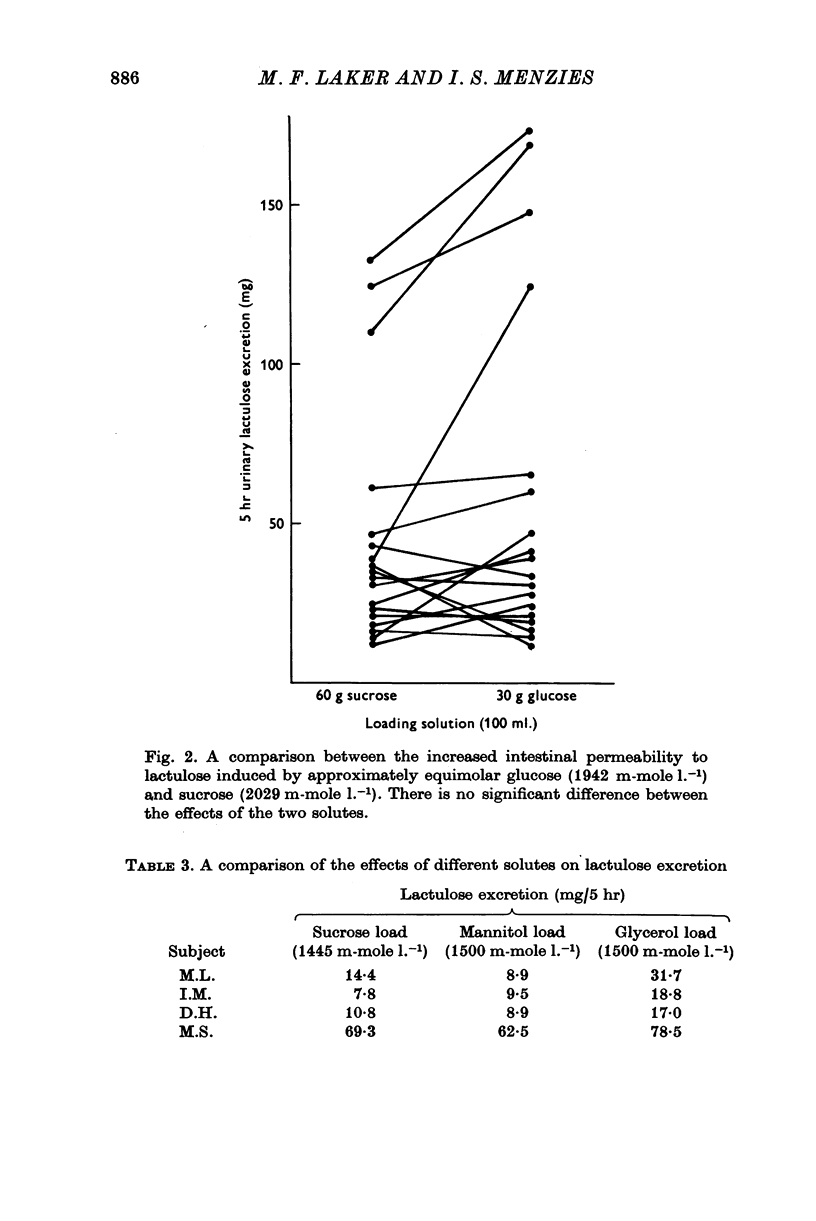


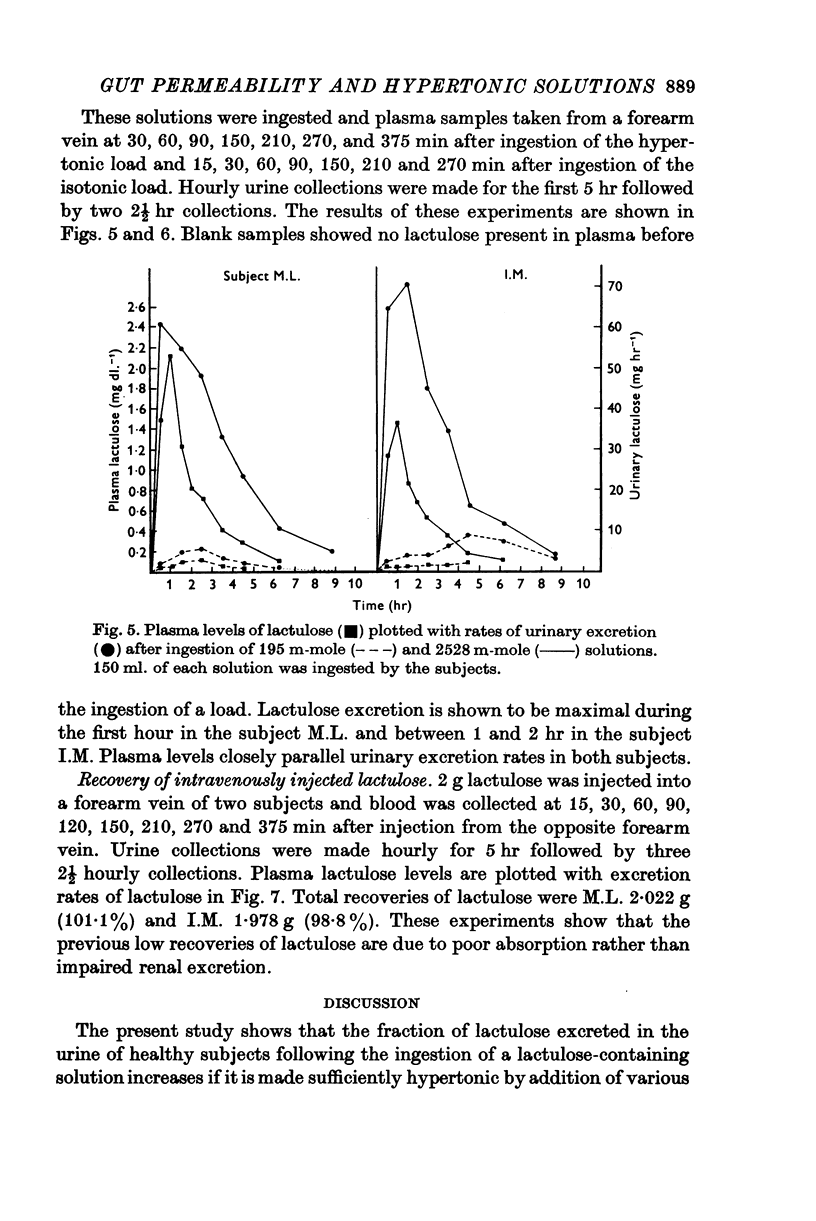
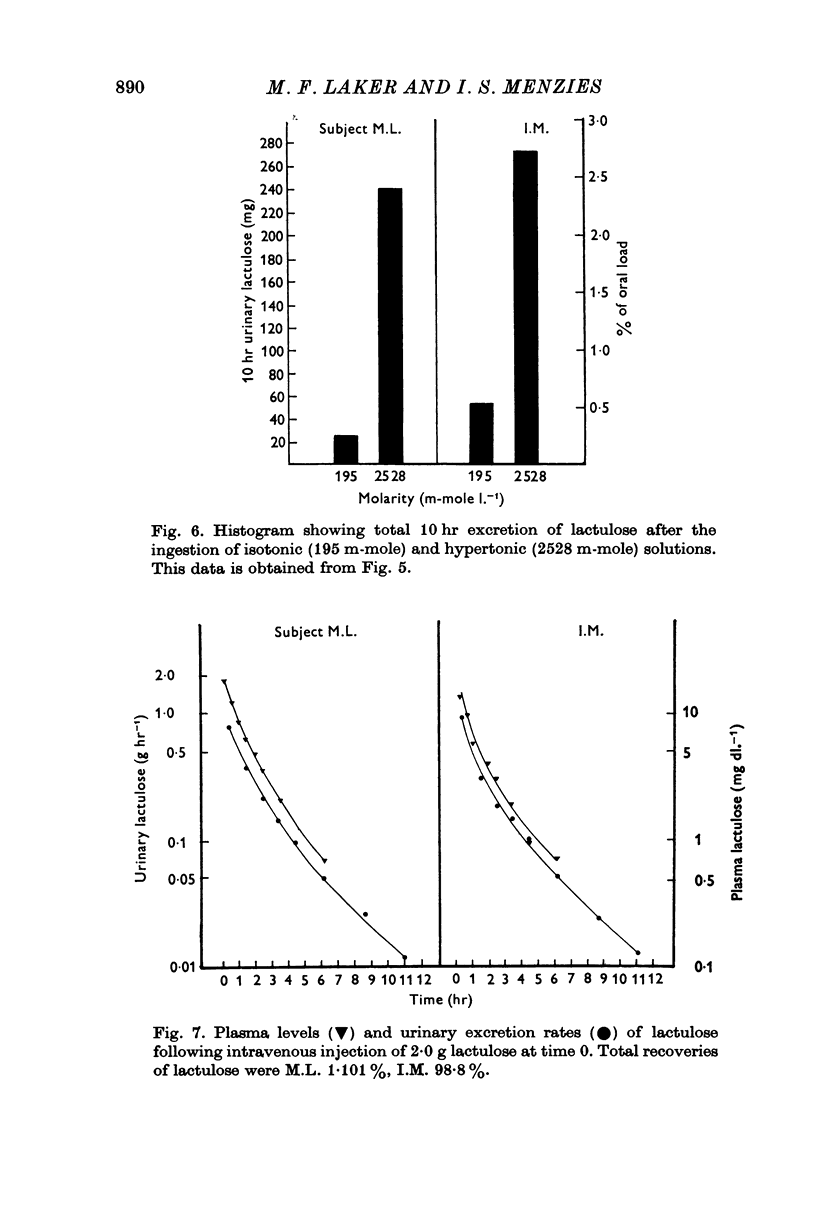
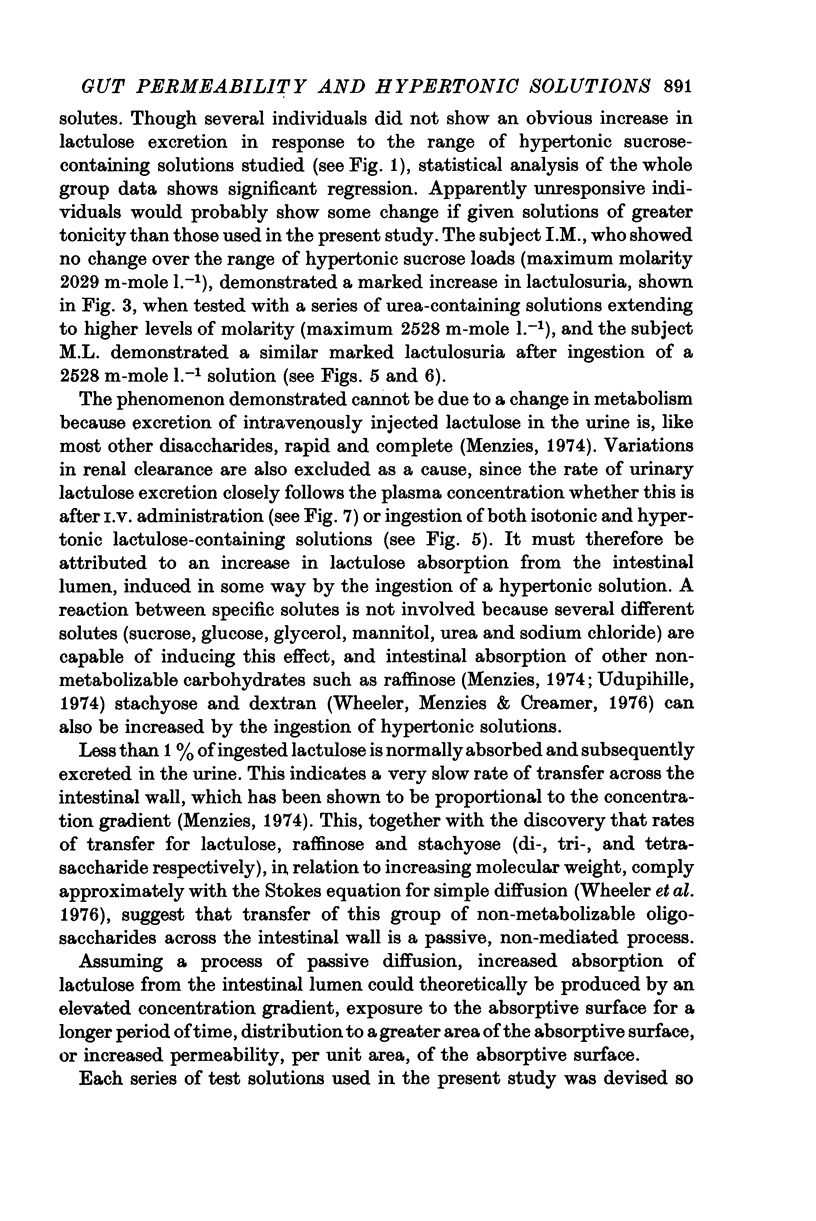
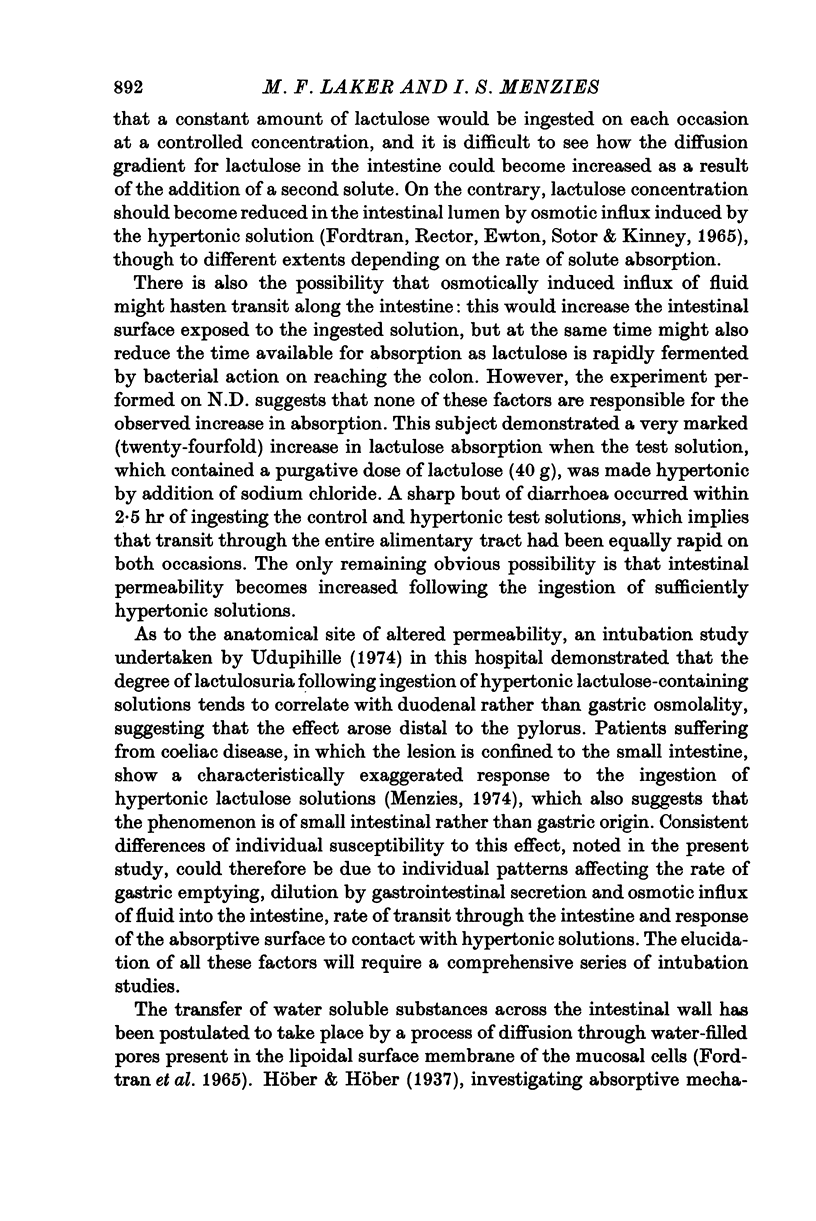
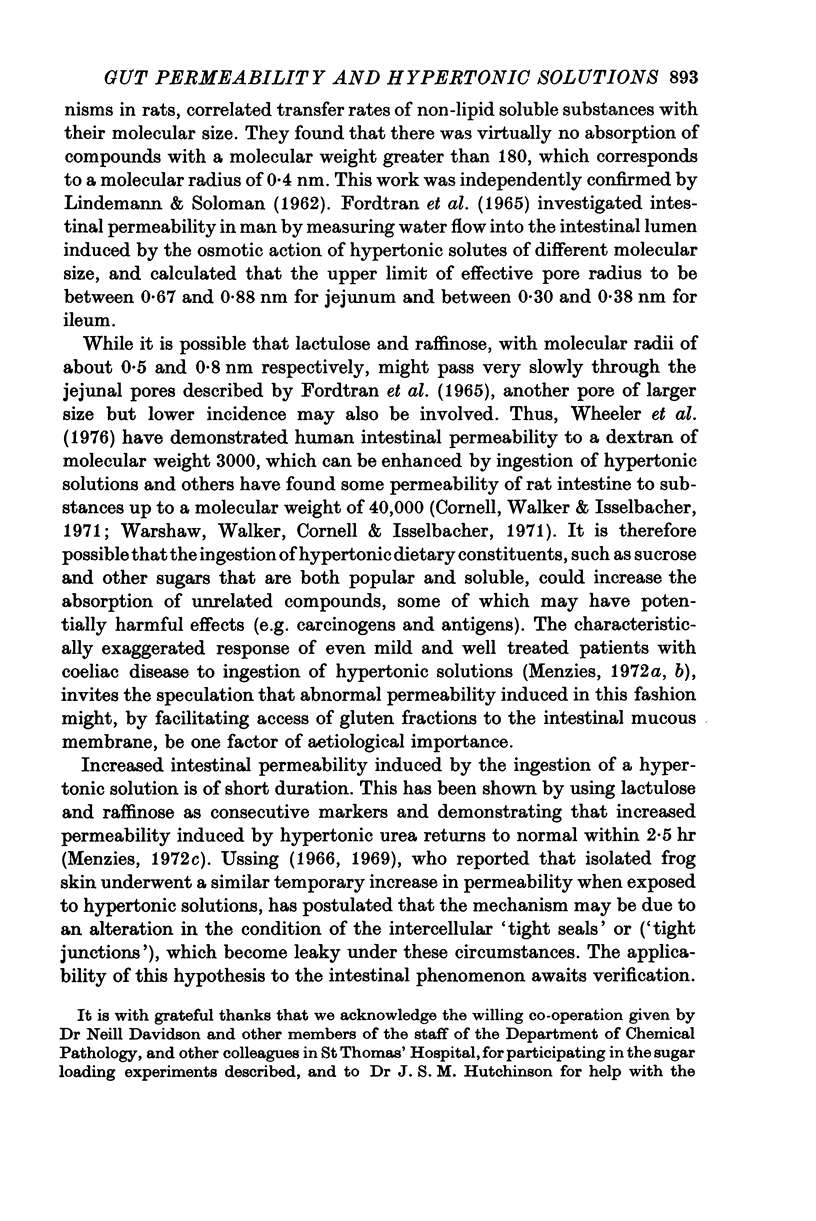
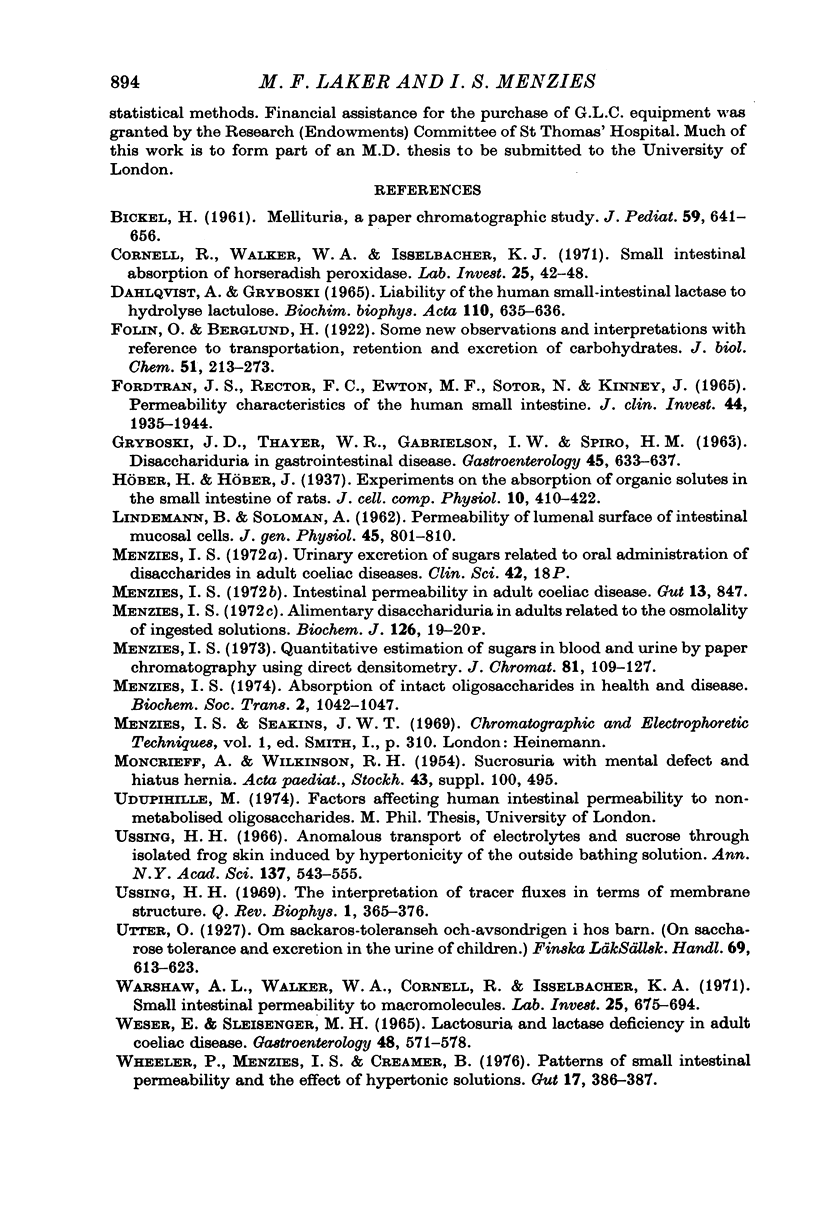
Selected References
These references are in PubMed. This may not be the complete list of references from this article.
- BICKEL H. Mellituria, a paper chromatographic study. J Pediatr. 1961 Nov;59:641–656. doi: 10.1016/s0022-3476(61)80001-2. [DOI] [PubMed] [Google Scholar]
- Cornell R., Walker W. A., Isselbacher K. J. Small intestinal absorption of horseradish peroxidase. A cytochemical study. Lab Invest. 1971 Jul;25(1):42–48. [PubMed] [Google Scholar]
- Fordtran J. S., Rector F. C., Jr, Ewton M. F., Soter N., Kinney J. Permeability characteristics of the human small intestine. J Clin Invest. 1965 Dec;44(12):1935–1944. doi: 10.1172/JCI105299. [DOI] [PMC free article] [PubMed] [Google Scholar]
- GRYBOSKI J. D., THAYER W. R., Jr, GABRIELSON I. W., SPIRO H. M. DISACCHARIDURIA IN GASTROINTESTINAL DISEASE. Gastroenterology. 1963 Nov;45:633–637. [PubMed] [Google Scholar]
- LINDEMANN B., SOLOMON A. K. Permeability of luminal surface of intestinal mucosal cells. J Gen Physiol. 1962 Mar;45:801–810. doi: 10.1085/jgp.45.4.801. [DOI] [PMC free article] [PubMed] [Google Scholar]
- MONCRIEFF A., WILKINSON R. H. Sucrosuria with mental defect and hiatus hernia. Acta Paediatr Suppl. 1954;43(100):495–516. doi: 10.1111/j.1651-2227.1954.tb15494.x. [DOI] [PubMed] [Google Scholar]
- Menzies I. S. Quantitative estimation of sugars in blood and urine by paper chromatography using direct densitometry. J Chromatogr. 1973 Jun 27;81(1):109–127. doi: 10.1016/s0021-9673(01)82322-0. [DOI] [PubMed] [Google Scholar]
- Ussing H. H. Anomalous transport of electrolytes and sucrose through the isolated frog skin induced by hypertonicity of the outside bathing solution. Ann N Y Acad Sci. 1966 Jul 14;137(2):543–555. doi: 10.1111/j.1749-6632.1966.tb50180.x. [DOI] [PubMed] [Google Scholar]
- WESER E., SLEISENGER M. H. LACTOSURIA AND LACTASE DEFICIENCY IN ADULT CELIAC DISEASE. Gastroenterology. 1965 May;48:571–578. [PubMed] [Google Scholar]
- Warshaw A. L., Walker W. A., Cornell R., Isselbacher K. J. Small intestinal permeability to macromolecules. Transmission of horseradish peroxidase into mesenteric lymph and portal blood. Lab Invest. 1971 Dec;25(6):675–684. [PubMed] [Google Scholar]
- Wheeler P. G., Menzies I. S., Creamer B. Proceedings: Patterns of small intestinal permeability and the effect of hypertonic solutions. Gut. 1976 May;17(5):386–387. [PubMed] [Google Scholar]


